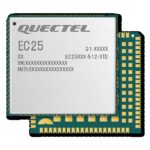Integrating technology into your car can significantly enhance its functionality, and one intriguing avenue is connecting your car audio system to the OBD2 port. While not a direct audio connection in the traditional sense, leveraging the OBD2 port opens up a world of possibilities for car audio and overall vehicle management, especially when combined with devices like tablets. Let’s explore how this works and what benefits it offers.
One of the initial points to consider is software compatibility, particularly for USB audio. Direct USB audio connectivity can be software-dependent. For Android users, devices running version 5.0 (Lollipop) and later generally offer native USB audio support. If your device runs an older version, enabling USB audio might require custom ROMs or kernels. This path, however, involves rooting your device, a process that can be complex and may void your warranty. Unless you’re comfortable with advanced software modifications, exploring alternative audio solutions might be more practical.
The real power of OBD2 connection lies in its ability to interface with your car’s diagnostics system. By connecting a device, such as an Android tablet, to your OBD2 port, you can access a wealth of vehicle data. This is where apps like Torque come into play. Pairing your tablet with a Bluetooth OBD2 scanner, readily available for a modest price, unlocks access to real-time engine information and diagnostics. Simply plug the scanner into the OBD2 port, typically located beneath the dashboard on the driver’s side, and connect it to the app. This setup is incredibly valuable for tasks ranging from diagnosing engine light issues to monitoring fuel efficiency and even enabling GPS tracking.
Speaking of GPS, your tablet can also serve as a sophisticated navigation system. Numerous apps offer mapping and turn-by-turn directions. Popular choices include Google Maps and Navigation. While these apps utilize your tablet’s built-in GPS, their performance is enhanced when the tablet is connected to Wi-Fi. While some tablets have integrated cellular data capabilities (3G or 4G), many, like Wi-Fi-only models, benefit from tethered internet access.
For users familiar with rooting and custom ROMs, Wi-Fi tethering becomes a valuable asset. Tethering, often using your smartphone, allows your tablet to access the internet. This connection enhances GPS accuracy, enables music streaming, and facilitates voice-activated search and notifications on your tablet. If your data plan allows, tethering, or using a dedicated mobile hotspot, is highly recommended for a seamless in-car tablet experience.
Finally, to streamline the process of using your tablet in your car, consider utilizing NFC tags. Setting up your in-car system each time you drive can be time-consuming, involving launching apps and enabling connections. NFC tags offer a solution by automating these tasks. These tags can be programmed to execute specific actions when tapped with your device. For instance, an NFC tag in your car could toggle your phone’s Wi-Fi hotspot on or off. Similarly, a tag placed on your tablet mount could automatically activate GPS and Bluetooth, and launch a car-centric app like AutoMate. NFC tags are a convenient addition that saves valuable time and simplifies your connected car experience.
In conclusion, while the “Car Audio Connection To Obd2” might not be a direct audio signal pathway, it represents a gateway to enhanced car functionality and a richer in-car experience. By connecting a tablet to your OBD2 port and leveraging software and connectivity options, you can significantly upgrade your car’s capabilities, from diagnostics and navigation to entertainment and automation.
